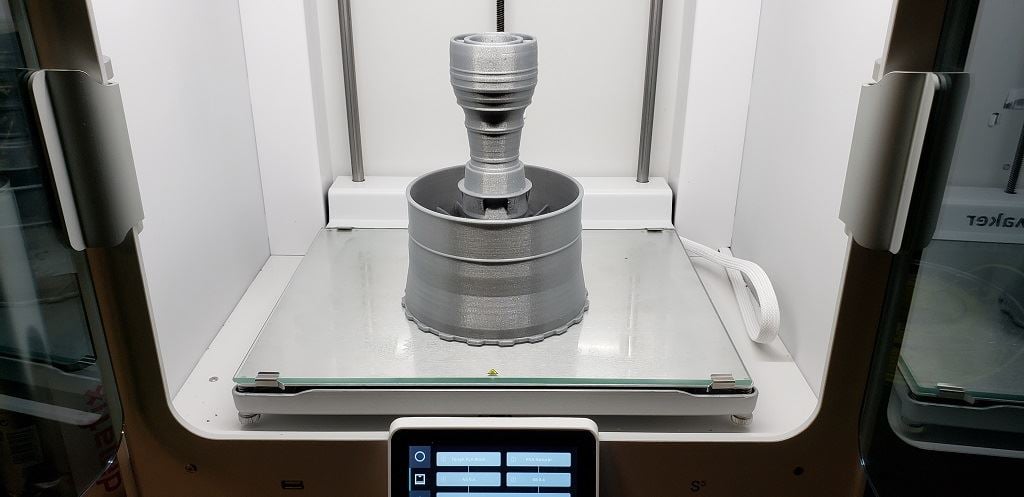![Model: Jet Engine Model by An Duong [Image: DesignBox3D]](https://fabbaloo.com/wp-content/uploads/2020/05/Fabbaloo2a_img_5eb0945383fac.jpg)
Additive Manufacturing has been around since the 1980s. Thirty years. In that time, we have witnessed a dramatic evolution of the industry. We have gone from expensive, proprietary solutions to inexpensive hardware that is built loosely around the premise of an “open material” approach.
Initial product and design leadership in relation to hardware and materials was in Europe and the United States. As with any growing market, Chinese companies jumped in and we witnessed a downward spiraling of prices for desktop and industrial grade 3D Printers.
Startups have come and gone, and dozens still linger like the “Walking Dead”. We have witnessed some mergers and acquisitions activity but mostly there continues to be a slow but steady thinning out of the herd on the manufacturing side. We are well past the pipe dream stage where manufacturers pitched a vision of “a 3D printer in every home” and gradually making the swing back to “a 3D printer on every engineer’s desk”.
Over the course of the last few years, we have witnessed a steady conversion of corporate and manufacturing entities into actual clients. For years, we would meet with and discuss the cost benefits of additive manufacturing with design engineers from such companies at trade shows and all they were doing was “kicking the tires” and getting a feel for what was available in terms of hardware and materials solutions that could fit their in-house design and prototyping needs.
What came next was a slow but steady growth of the “professional user” segment of the market. Product and design engineers in large corporations began to pitch their vision on how additive manufacturing solutions could benefit their companies and provide a cost-effective solution for in-house design and prototyping of products. More often than not, these “innovators” would seek budgetary approval to acquire one or two desktop 3D printers and then find themselves overwhelmed by a marketplace that is littered with a vast range of hardware and material solutions.
Navigating this space without guidance is akin to the strategy many resellers in the channel follow – they offer everything and anything in terms of 3D printers and materials to see what sticks. When these innovators approach the channel, resellers without focus and qualified personnel to make appropriate recommendations will not provide the unbiased and objective guidance and advice that is needed to ensure their initial success with additive manufacturing.
Some manufacturers that have emerged over time as de facto leaders in the space have started to focus on helping large corporate clients navigate this bottleneck and adoption hurdle by guiding them through the adoption and implementation process. However, the challenge with a manufacturer offering such a paid service is that no matter what the application or need, the technology that is ultimately chosen is their own. Therefore, while this is better than “innovators” navigating the marketplace minefield on their own, it is not the objective, unbiased advice that is truly needed.
With a long view of the additive manufacturing industry, I have chosen to engage with clients to help guide them through the challenging process of pinpointing exactly where additive manufacturing fits in their design and manufacturing processes, technology fit, selection and testing – culminating in implementation and rollout. Unless and until the channel includes VARs or advisory services firms that can help guide clients to the right solution and vendor, we will not see widespread and successful adoption of additive manufacturing enterprise-wide.
The case studies of success stories we are seeing now from manufacturers of 3D printers (industrial and professional desktop solutions) and materials are siloed successes. In order to truly be embraced by industry, additive manufacturing rollout cannot be siloed anymore. Manufacturers of hardware and materials need to partner with additive manufacturing solution providers that help large companies with the process of technology selection, vendor selection, process integration, implementation and rollout.
When additive manufacturing advisory services companies seamlessly partner with manufacturers and vendors (resellers), we will see mass corporate adoption of 3D printing on both the desktop and the factory floor.











